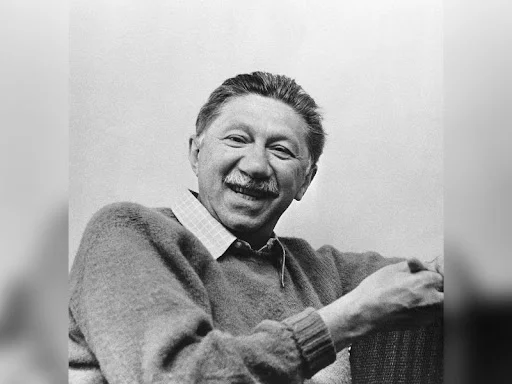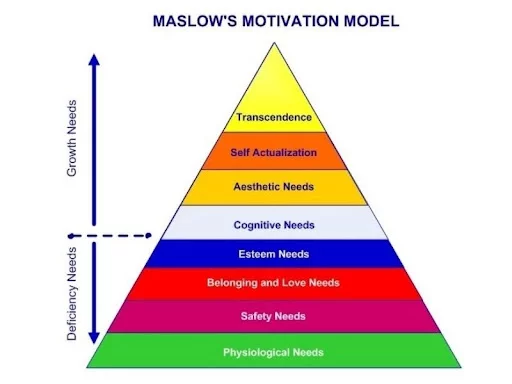
What is the Maslow pyramid and how can it be applied?
Perhaps one of the best known models in motivation research is Maslow's hierarchy of needs. Which is not surprising, given that it is still used in many fields today. From advertising to motivating employees to almost any self-development seminar, the theory can be found. In this article, we present the main ideas of Maslow's pyramid, the different levels and a critique of the model. Finally, we will discuss how the hierarchy of needs can be applied in project management and leadership theory.

What is the Maslow pyramid?
For a very long time, humanity has been interested in what is behind people's behaviour, what motivates them and why. One possible answer to these questions is Maslow's pyramid - which, interestingly, was never depicted as a pyramid by its creator, Abraham Maslow.
Maslow's pyramid shows the hierarchy of human needs. Maslow's hypothesis is that human needs:
- 5 main categories (to which 2 additional categories were added later)
- There is a hierarchical relationship between these categories
- Higher-order needs can only be prioritised if lower-order needs are at least partially met
Maslow first introduced the hierarchy of needs in 1943, in Theory of Human Motivation published in his book. And in the 10 years following the publication of the book, he further developed the theory, which he described in more detail in 1954 in Motivation and Personality in his book.
Levels of the Maslow pyramid
Maslow's pyramid originally consisted of 5 levels, which Maslow later added 3 additional levels as his research progressed. In this article, we describe all 8 levels for the sake of completeness. (The original 5 levels are in bold.)
- Physiological needs
- Security needs
- Social needs
- Need for recognition
- Cognitive needs
- Aesthetic needs
- Need for self-fulfilment
- Transcendental needs

Physiological needs
Physiological needs are indispensable needs for humans, which, if not met, make it almost impossible to move to the next level. What does this include?
- Breathing
- Nutrition (Eating and drinking)
- Sleep
- Metabolic processes
- Sexuality
Security needs
If the needs of the previous level are met, the next critical step is a sense of security. Whereas in the old days this meant concrete physical security, in the modern age the focus is more on material security. It therefore includes:
- Personal safety, health protection
- Financial, material security
- State-level social, legal, etc. safety net (protects you from fraudsters, criminals or if you are sick)
Social needs
This level is about a sense of belonging. If the conditions are not met, sooner or later the individual becomes lonely, anxious or even depressed. This includes:
- Family
- Friends
- Wider community
- Need for intimacy
Need for recognition
At the heart of this level is the recognition of the individual by his or her environment, so that he or she can feel valued. Maslow divided the needs here into two parts:
- At a lower level, we seek the recognition of others for fame, status, prestige
- And at a higher level, self-esteem, self-confidence, independence
The need for recognition is of paramount importance in the development of children and adolescents. If an individual receives the attention and recognition they need during this period, they will develop a healthier self-esteem, which will prevent many of the problems they will face in adulthood.
Cognitive need
Cognitive need is the desire and motivation to learn. The urge to continuously acquire information and learn. The individual has a need:
- To better understand the world
- Understand the everyday stimuli in your own life
- To acquire knowledge on topics of interest to them
- Learn the truth behind the surface
Aesthetic need
A desire for beauty, orderliness of the environment, purity and harmony around the individual.
Need for self-fulfilment
This need was originally at the top of Maslow's pyramid. It means that people have the need to push themselves to the maximum, to constantly push their limits and to realise their dreams and ideas. This need can take almost infinite forms, from artistic pursuits to making the world a better place, or scientific work.
Transcendental or spiritual need
In his later years, Maslow criticised his idea of self-realisation and introduced a new dimension to the theory. At the transcendental or spiritual level of need, man transcends himself and reaches the highest level of human consciousness. This includes, for example, altruism and spirituality.
Deficit-based and growth-based needs
Needs at the first 4 levels of the hierarchy of needs can be called deficit-based, while needs at higher levels can be called growth-based. What does this mean?
- Deficit-based needs are basic, instinctive needs that, when met, reduce internal tension. Unmet needs increase motivation.
- Growth-based needs usually come after deficit-based needs have been met, and interestingly, meeting them also increases motivation. The ultimate goal is to get more and better out of ourselves
Critiques of Maslow's needs pyramid
Interestingly, Maslow's hierarchy of needs has never been proven by research, which is one of the bases of the model's criticisms. Another argument of the critics is that there are many cases that contradict the hierarchy, such as the ascetic lifestyle of monks or even hunger strikes. These cases show that some elements of the hierarchy do not necessarily build on each other, so the order in which they are fulfilled can change.
A further criticism is that the hierarchy of needs leaves out cultural and age-specific aspects, since in some cultures, for example, sexuality is perceived at a completely different level, or other urges become more important as people get older.
Nevertheless, we believe that the Maslow pyramid, when properly applied and taking into account the specific characteristics of a given society and era, can be a very useful tool in many fields, including management science and project management.

Application of Maslow's pyramid in leadership, project management
The right motivation of the project team is a very important factor in the project management process. With enthusiastic, committed team members, you can achieve a much more satisfying and better project result.
We've put together some tips on how to motivate project team members at each level of the Maslow pyramid:
- Physiological level: determining appropriate salaries and bonuses
- Safety level: providing the tools needed to work effectively, creating a safe environment both physically and emotionally
- Level of social needs: weekly project team meetings and joint celebration of project milestones
- The need for recognition: to thank for their work, participation, commendation of outstanding members. Ensuring that all team members feel an important part of the project
- Cognitive need: ensuring a continuous flow of information, transfer of know-how, training opportunities
- Aesthetic need: a friendly, aesthetic working environment and tools
- The need for self-fulfilment: career objectives should be taken into account when assigning tasks
In summary, the Maslow pyramid provides a great basis for understanding human behaviour and motivation, which can be applied to many areas of life. Of course, it is important to take into account the particular cultural and social context, but when properly addressed it is extremely useful in almost all areas, including many areas of business.

 Designabc
Designabc